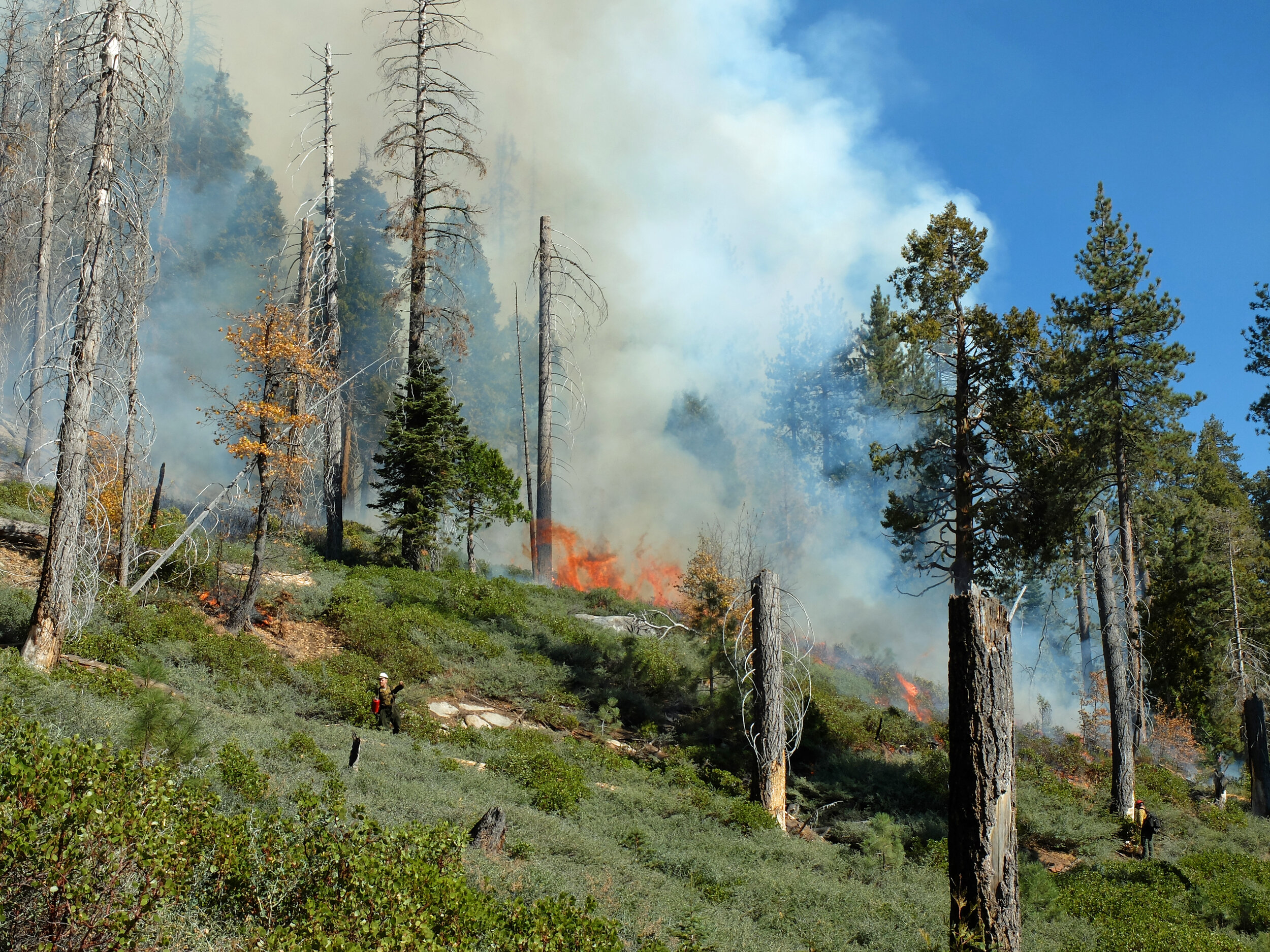Group of Researchers in the forest
With funding from the Forest Health Research program, the “Teakettle Experiment” led by Dr. Matthew Hurteau from the University of New Mexico, continues important work that began over 20 years ago to quantify the effects of prescribed fire and thinning on the ecosystem in the Teakettle Experimental Forest in the southern Sierra Nevada Mountains. This long-term research project is examining six different treatment options, including different intensities of thinning and prescribed fire. After initial treatments and measurements in 2001, a second prescribed burn was performed in 2017. This provided an opportunity for Dr. Hurteau to study the long-term effects of these treatments, including their maintenance through repeated application of fire.
In the wake of recent wildfires and severe drought-induced tree mortality, understanding the effects and effectiveness of these treatments on forest carbon is essential to California’s climate goals.
“Matthew Hurteau’s work with collaborators at Teakettle and across California on carbon dynamics as related to forest restoration and disturbance has been indispensable,” said Amarina Wuenschel, Southern Sierra Associate Province Ecologist for the U.S. Forest Service. “Their progressive body of work has helped us usher in a new era of forest management wherein we have gained focus on the stability of long-term carbon stores on our forested landscapes in a changing climate.”
Forests are an integral component of the global carbon cycle, capturing carbon dioxide from the atmosphere through photosynthesis, and storing it as carbon in trees and other organisms. Forests’ continued contribution to regulating the climate depends in part on their resilience to wildfire, drought, and other disturbances that can cause the release of GHGs.
Prescribed fire in the forest



